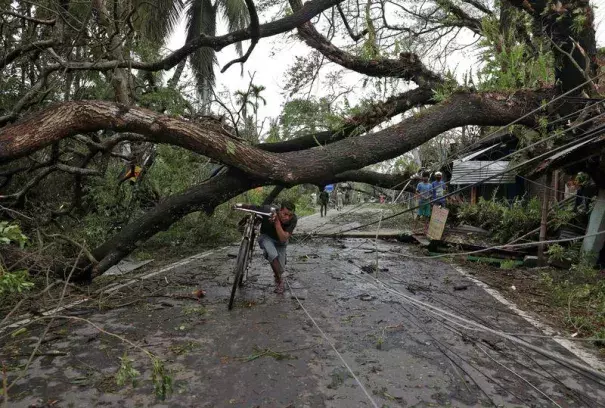Cyclone Amphan loss estimated at $13 billion in India, may rise in Bangladesh

Climate Signals Summary: Climate change is increasing the damage that storms like Cyclone Amphan bring by increasing sea surface temperatures which can lead to higher wind speeds, and increasing the risk of severe flooding and storm surge by accelerating sea level rise and increasing the amount of rain that falls during storms.
Article Excerpt: A powerful cyclone that tore through India’s eastern state of West Bengal this week has caused a damage of 1 trillion rupees ($13 billion) to infrastructure and crops, state officials said.
Neighbouring Bangladesh, which also fell into the path of Cyclone Amphan on Wednesday, initially said it had suffered a loss of 11 billion taka ($130 million). But this could rise, government officials said.
The two countries have lost at least 102 people in the cyclone, the most powerful in over a decade, mostly because of house collapses and electrocution. More than 3 million people were evacuated before Amphan made landfall, preventing a large number of deaths.
The cyclone has affected more than 13 million people - some losing houses, crops and lands - and over 1.5 million houses have been damaged, two West Bengal government officials told Reuters.
...
Hundreds of thousands are in relief camps across the state, the officials said, amid concern that lax social distancing norms could fuel a spread of coronavirus cases.


